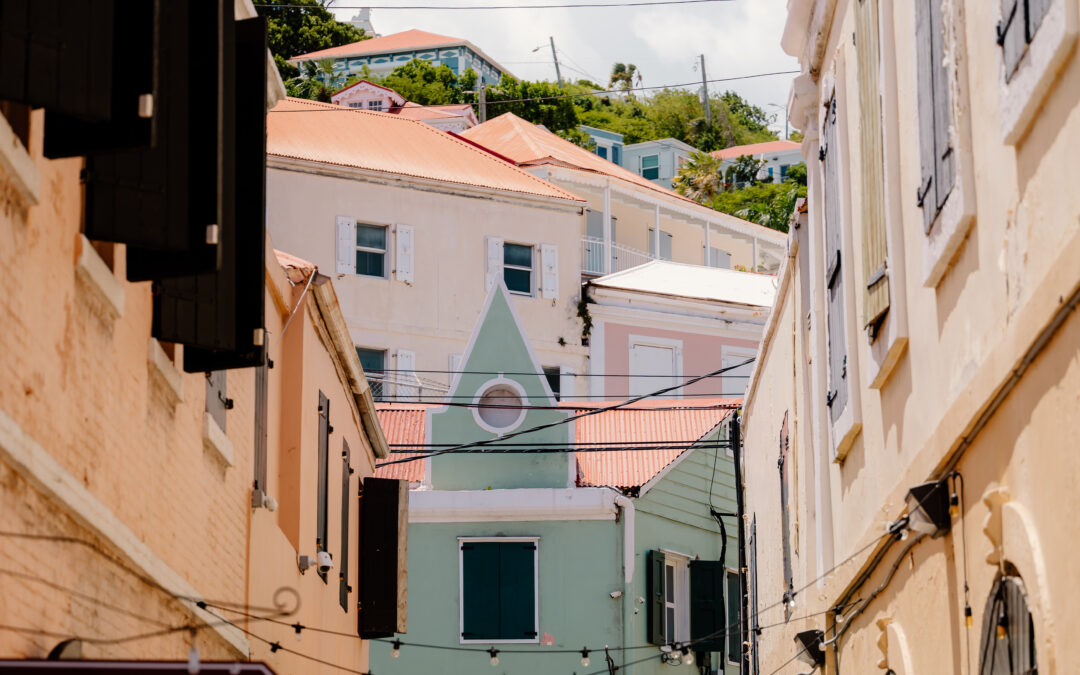The Caribbean is know for exactly 3 things: 1. Stunning beaches 2. Frozen drinks 3. Cool history.
And by all means, you should spend most of your trip enjoying #1 and #2. But when it’s time to get a little island history and culture…
…these are without a doubt the best historical sites in St. Thomas.
(I recommend combining #2 with #3 when possible.)
Conveniently, almost every historical site is located within the old town of Charlotte Amalie. If you are coming on a cruise ship you are a short walk or taxi ride to Charlotte Amalie. If you are coming on a plane, you’ll pass right through town when leaving the airport. And no matter where you are staying on island, you’ll be no more than 20 minutes or so away from historic Charlotte Amalie.
This old town was established right on the water almost 400 years ago as pirates and traders of the era expanded their dominion over these Caribbean Islands. Many of the sites you’ll see date back 200-300 years and one is 500 years-old or more.
1. Fort Christian
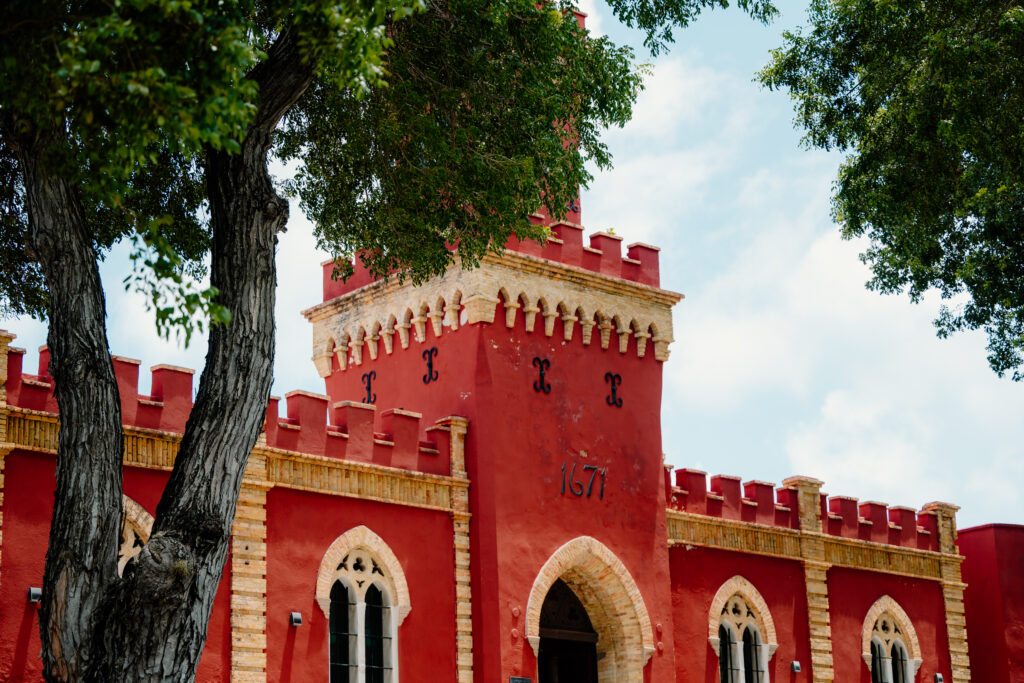 This is the grandaddy of historic buildings here in Charlotte Amalie. With its imposing red walls Fort Christian is massive and impossible to miss when driving along the waterfront.
This is the grandaddy of historic buildings here in Charlotte Amalie. With its imposing red walls Fort Christian is massive and impossible to miss when driving along the waterfront.
It is the oldest structure on St. Thomas that dates back to the first years of Danish rule in the 1600s. The fort protected the island and also acted as the prison, church, government offices and place to party.
There’s a $10 admission fee to get in. You’ll have mostly free reign to explore the fort and rooms. The exhibits are limited so you’ll rely mostly on your imagination as to what it was like living and working at the fort 300 years ago. If nothing else, it is worth climbing to the top of the walls to get a view of town and the harbour. (Check out our tours that include a tour of Fort Christian.)
Getting there: You can park right at Fort Christian parking lot. Or take a taxi to Fort Christian. It’s big and red. You can’t miss it.
2. Hebrew Synagogue
 Men and women build places of worship to feel closer to God. The Hebrew Synagogue in St. Thomas creates a unique environment unlike anything I’ve ever experienced here in St. Thomas. Maybe it’s because this is the oldest Synagogue in continuous use in the United States?
Men and women build places of worship to feel closer to God. The Hebrew Synagogue in St. Thomas creates a unique environment unlike anything I’ve ever experienced here in St. Thomas. Maybe it’s because this is the oldest Synagogue in continuous use in the United States?
I’m not Jewish, but the history and reverence you see and feel in this place is palpable.
The floor is covered with sand. And not from a bunch of rowdy Midwestern tourists after a beach day. The sand is a purposeful tradition dating back hundreds of years. It’s a tribute and reminder of Jews that hid their beliefs during the Spanish Inquisition. Back then they spread sand on their floors to muffle the sounds of their worship. For if they were found out to be practicing Jews, the Catholic authorities would exile them (or worse).
When you visit, run your hands along the pews. These gorgeous benches were built by local shipbuilders. They are made of a rare, West Indian Mahogany. It is rare because there are very few of those trees left here in the Virgin Islands.
You can also explore the small museum celebrating the synagogue’s history with artifacts and photos.
The synagogue is usually open for visitors but I highly recommend giving them a quick call before you swing by: 340-774-4312.
And when you visit bring your camera and wallet – they love donations and have a gift shop. 🙂 Check out the Synagogue’s website: St. Thomas Hebrew Synagogue
*So as not to spoil all the stuff you’ll get to see, make sure to ask an attendant about the scrolls!
Getting There: Located on Synagogue Hill which is one street in from Back Street which is one street in from Main Street.
3. 99 Steps
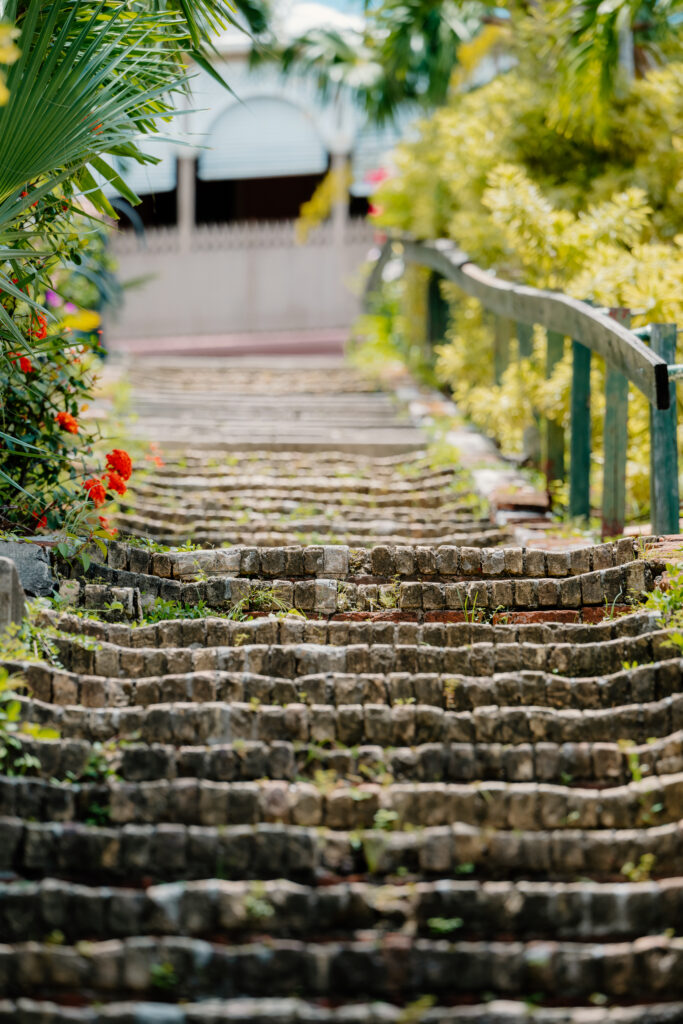
So why should you want to visit a glorified outdoor staircase?
Cuz it is an example of one of Charlotte Amalie’s coolest features – step streets.
If you don’t notice immediately, I’ll spoil a little surprise – St. Thomas is super hilly. Flat spots are harder to come by than an iguana’s teat.
So these ‘staircases’ you find throughout the town are actually streets. And 99 Steps is a beautiful street (back in the good ol’ days 99 Steps was called Store Taarne Gade – the actual street name). The stairs, worn by thousands of pedestrians over the centuries, are made from materials brought over on ships from Europe. The bricks were used as ballast in the holds of ships. They needed the ballast to keep the ships stable when sailing over the Atlantic. The bricks weren’t needed for the return trip since the ships were loaded with island goodies – produce, cotton, tobacco, rum, etc for the return trip.
At the top of the stairs are old, gorgeous Danish residences and Blackbeard’s Castle (the “Castle” is actually a defensive lookout and cannon tower that had nothing to do with Blackbeard).
Visiting 99 Steps is about walking in the footsteps of both the commoner and highbrow elites of St. Thomas’ past. The step street also offers some lovely views of town and old homes. And finally, it’s about saying that you actually walked them. Purely for those of stout heart and hips.
Quick Note: A bunch of people claim there are not 99 steps. But I don’t care what anyone says, there are 99 steps. You’ll have to climb them and count them yourself. I absolutely defy anyone to tell me there aren’t 99 Steps. Seriously, if are able to prove to me there aren’t 99 Steps, I will gladly carry you up the steps on my back.
Getting there: The bottom of the step street is located on Government Hill just past Hotel 1829.
4. Frederick Evangelical Lutheran Church

I grew up in Catholic Churches. My dad was a choir director and I an altar boy. These structures are hallowed ground for me and many others. If not for their intended purpose of worshipping God, then for the many other events celebrated there – weddings, funerals, baptisms, etc. Even if you don’t “go to church”, these buildings are wonderful for their historical significance and beauty.
The King of Denmark required his subjects to be Lutherans. So all of the early Danish colonists were members of the church. Before this building was built, the Lutheran congregation met inside the walls of Fort Christian. The Danish Lutheran congregation dates back to the very beginnings of colonization in the 1660s.
The Lutheran Church was home to 2 separate congregations with the same minister. The minister held services and performed sacraments for the Danish settlers and for Danish Creoles. The Danish Creole service was the dialect/language of most of the slaves and free black people on the island.
The construction of the church began in 1789 and was completed in 1793. So these walls have some whiskers.
All are welcome to attend service when visiting the island on Sundays at 9 am. Even if you aren’t religious, you can experience what it was like for island residents to worship 250 years ago.
You can stop by anytime and the front of the building and steps are open. If the front doors are open I don’t think anyone would mind you poking around. You can also call ahead and ask if they’ll give you a tour! 340-776-1315.
Check out their website here: Frederick Evangelical Lutheran Church
Getting there: If you are standing on the steps at Fort Christian, turn you back on the fort and look straight ahead. There it is.
5. Emancipation Garden
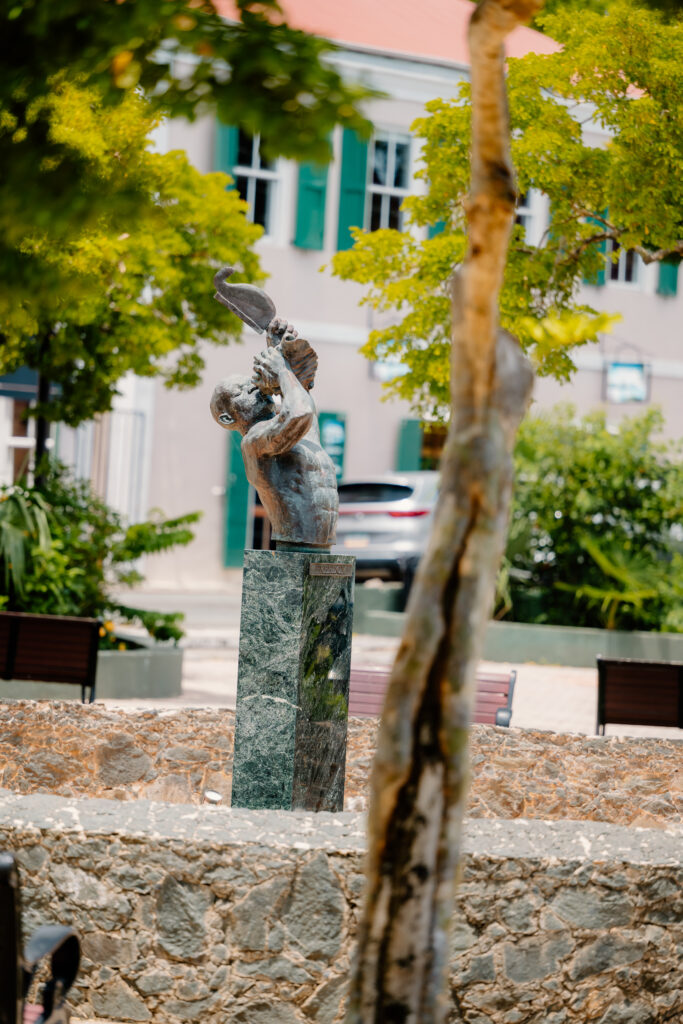
A lot of momentous and historical events occurred or were celebrated in this little town square.
The gazebo has hosted the likes of Eleanor Roosevelte and Charles Lindbergh. Many a celebration has been held here and during these festivals the Garden is full of music, food and folks.
You’ll find 2 statues in the garden of great significance – the Conch Blower and the Liberty Bell.
Each Virgin Island has a statue of the Conch Blower to commemorate the emancipation of slaves by the Danish governor on July 3, 1848.
The Liberty Bell is a replica of the Liberty Bell in Philadelphia. 57 Liberty Bells were cast for all the states and territories by the US Department of Treasury under President Harry Truman. The one you’ll see in Emancipation Garden is either Bell #51 or #55 as there is some ambiguity.
But one of the coolest historical facts you’ll learn while at Emancipation Gardens is on a small plaque under the Liberty Bell. Seriously, I think this is one of the coolest Virgin Islands connections that I bet less than .000001% of people know. I’ll leave you to check it out.
Getting there: If you are standing on the steps at Fort Christian, turn your back on the fort and look to your left and you’ll see it.
6. 13 Wimmelskafts
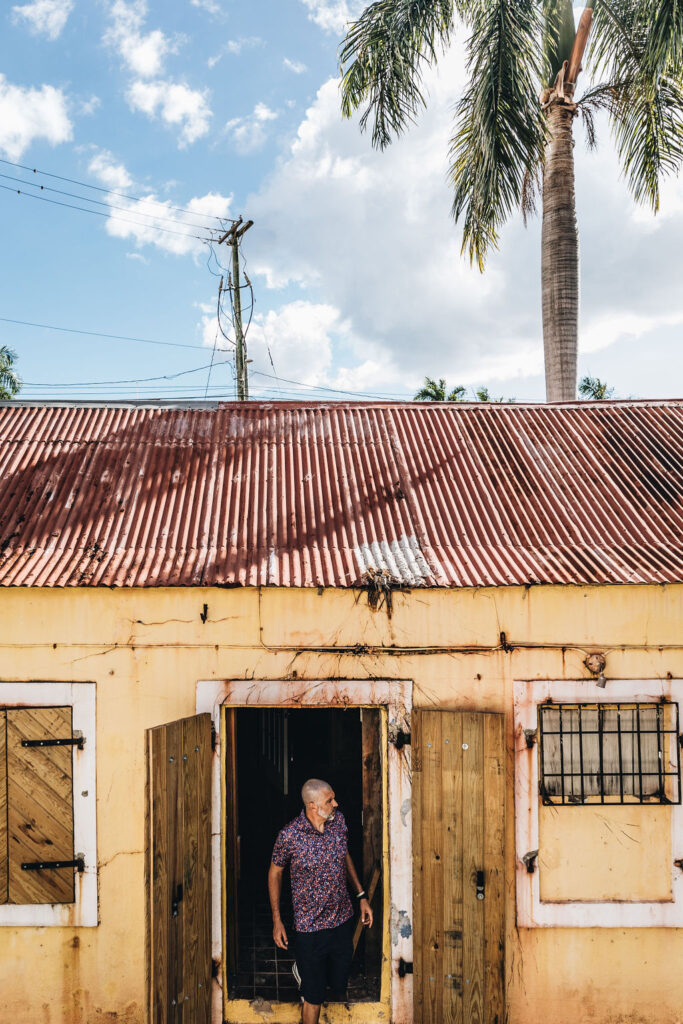
Nicole Canegata Photography
Tucked away just off Main Street is a recently restored slave and servants quarters – a one-of-a-kind structure in the Caribbean! Now a cafe, bar and place of historic bric-a-brac (they have a collection of Caribbean memorabilia and artifacts displayed on the walls), these slave quarters will give you a sense of the limitations and lives of a wealthy merchant’s servants.
A unique feature in the courtyard is a double oven. Used by the families that lived here, these ovens are the heart of the structure and are still in use for many traditional tasks such as cooking local foods and roasting coffee.
The staff at “13W”, as it is known locally, is familiar with some of the history of the building and can share what they know. Sadly, much of the building’s inhabitants’ stories are lost to history.
For my money, the best part of this place is being in town and not feeling like I’m at another tourist den. There is plenty of space to stretch out and escape the busy streets and barkers.
The ‘secret’ garden in the back is an oasis – filled with palm trees, tropical plants and Caribbean music. Grab a seat and while away an hour or two as you learn what it truly means to be on “island time”.
They are open daily if you’d like to drop in for a visit. They serve traditional local and Danish food, ice cream and island drinks.
Check out their website: 13Wimmelskafts
Getting there: Walk down Main Street toward Virgilios Italian Restaurant and take a right to go to Virgilio’s. Go past Virgilios and take a left (on another day you have to stop at Virgilio’s for some amazing Italian!). The road is called Back Street or Wimmelskafts Gade. Thankfully 13W isn’t on any of the tourist maps because I don’t think they want to be found.
7. Rothschild Francis Market Square
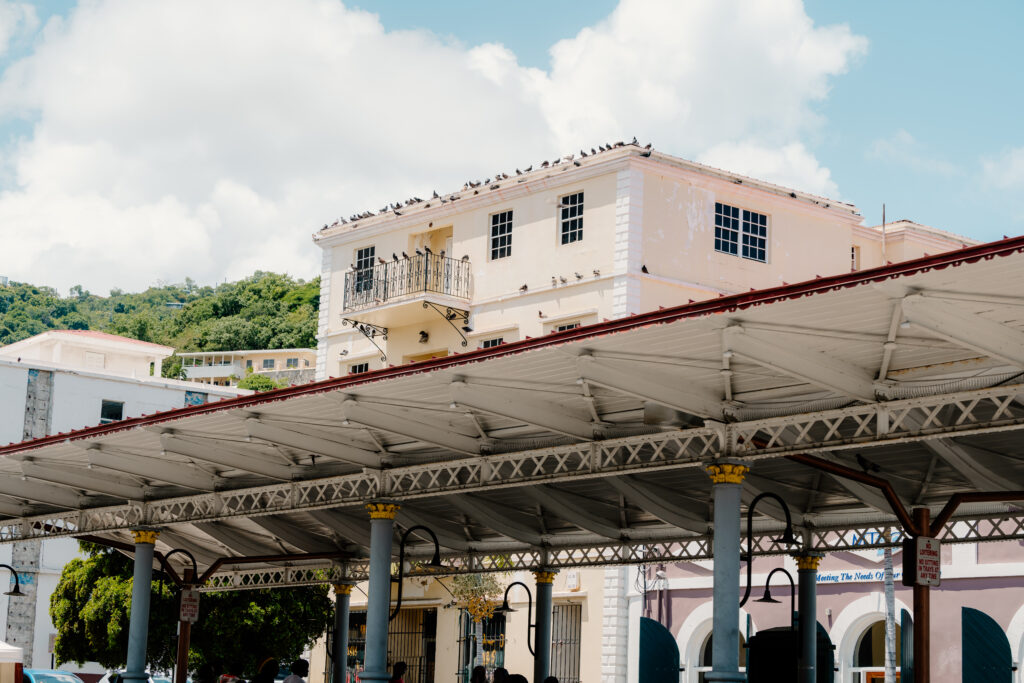
Market Square is steeped in history, much of it dark. But you can’t not mention this spot as it is one of the most historically significant sites on St. Thomas. And I think everyone that visits St. Thomas should visit Market Square.
During the golden age of slavery, it was one of the busiest slave markets in the Caribbean. The Brandenburg Company ran most of the slave trade and auctions that took place in the Danish West Indies. The Danish Crown had settlements on the coast of Africa that traded with the local Africans for human cargo. That cargo was brought to St. Thomas to be processed and either shipped elsewhere or sold in St. Thomas.
Today, on the weekends in the early morning, the area is turned into an open-air market. Locals sell produce, homemade goods and prepared food. It’s not earth shattering stuff but a slice of island life and a pleasant experience.
On other days, Market Square is the site of folks hanging out smoking weed. So while there’s not a ton to see, it is worth visiting just to soak in the gravity of such a powerful piece of history (it’s only a 1 minute walk from the Main Street shops so an easy spot to get to).
Blink and you’ll miss it, there is another interesting nod to the Virgin Islands’ Danish roots 50 feet from Market Square. There is a saltwater well dedicated to the Grandfather of Queen Margrethe II of Denmark (she abdicated the throne in 2024 but she’s still a queen to me!). I won’t spoil the surprise of its exact location and instead let you discover it yourself.
Getting there: If you start at the top of Main Street you’ll walk down past the last of the jewelry and gift shops. It is a couple hundred feet beyond Guttets Gade right on Main Street.
8. Magens Bay Arboretum and Ruins
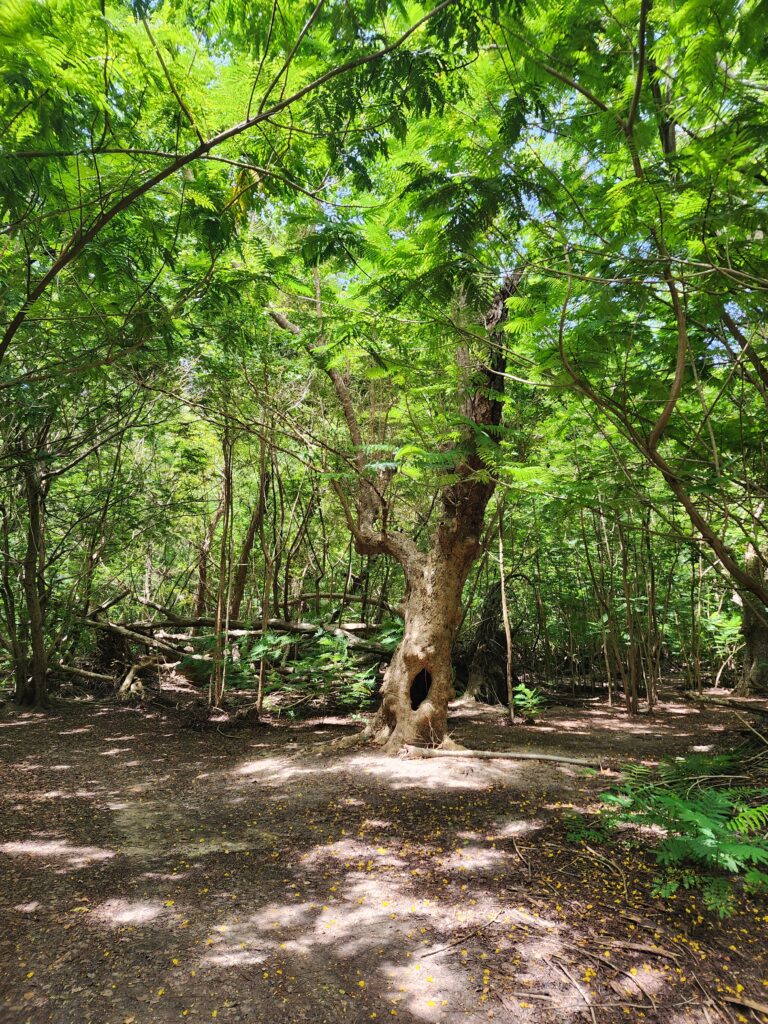
In the 1920s wealthy financier Arthur Fairchild (and former president of the NYSE) planned and planted an Arboretum of local and exotic plants and trees at Magens Bay Beach. Many of the species were imported from faraway lands. There are over 160 different species.
The Arboretum is not on many maps and seldom visited. I’ve walked the Arboretum hundreds of times and almost never see anyone else. There aren’t any identification tags on any of the plants or trees so I have a plant app on my phone that I use to identify them. Either way, you can still enjoy walking through this lush, tropical environment.
There once was a thriving sugar plantation in Magens Bay. If you keep your eyes peeled, you can see some of the ruins of the plantation in the Arboretum. The walls you find were possibly slave quarters. I’ll let you find them on your own – discovery is the fun part.
As you are strolling under the tropical canopy you can also soak up the history by knowing that you are walking in the footsteps and within the area that was once filled with an Arawak Village dating back 500 years or more! No visible traces remain but there are archaeological sites hidden in the bush.
A visit to the Arboretum is a fun adventure to break up your beach day at Magens. Step into the trail, close your eyes and imagine what it was like 200 or 1000 years ago to live in the lush, tropical bay.
Getting there: Head over to Magens Bay and go to the far left side (toward the west). You’ll find the entrance to the Arboretum.
In Closing: Most of the town of Charlotte Amalie is historic – in the sense that it is old and still displays many of the architectural elements in use during its founding. So you can walk the streets and alleyways and be transported back in time. But to get the full experience you should visit what I consider to be the best historic sites in St. Thomas.
If you want a curated and guided experience of Charlotte Amalie, we offer tours that include transportation, food, drink, culture, fun, hugs and history. Take a look: Charlotte Amalie Tours

